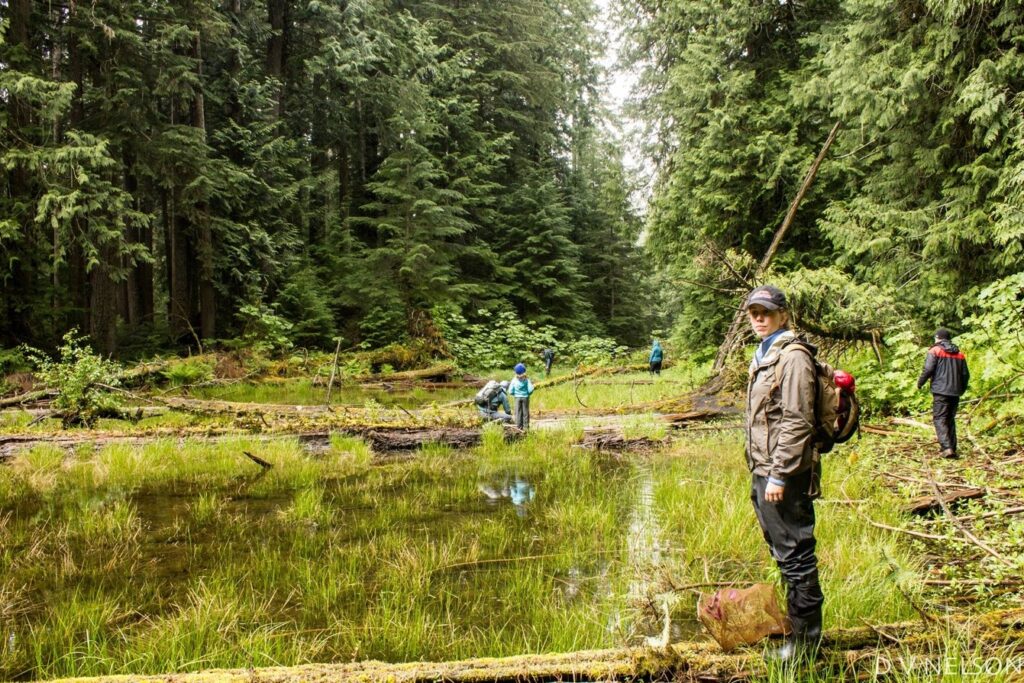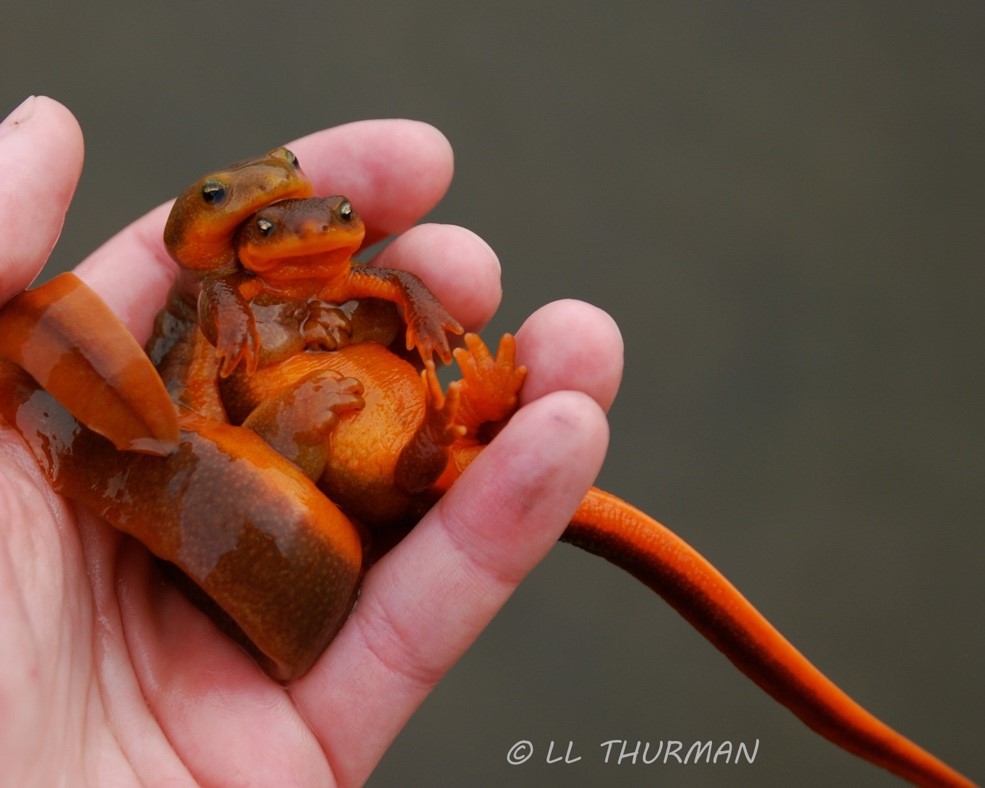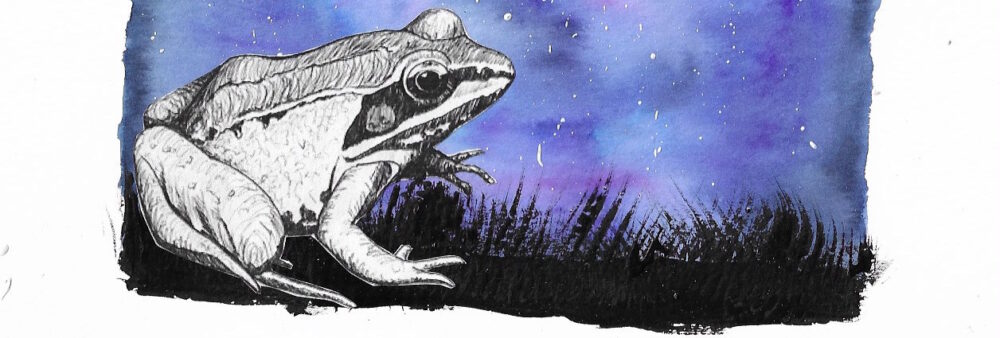By Beth Carroll

I think that ecology is just like a stereotypical middle school lunchroom– eighth graders bully sixth graders and within each clique, there is competition. Cafeteria monitors can detect the roles of each 12-year-old, but unlike middle school, determining how wild animals interact with one another is hard. It is especially hard if the animals are millimeters in length and spend most of their life burrowed under logs & leaves. These animals are salamanders and frogs, specifically those in Mount Rainier National Park, Washington. They emerge from the ground and conglomerate at isolated, mountainous pools of snowmelt once a year in order to breed; this is when they are considered “easiest” to find. Determining how these frogs and salamanders compete and predate on one another is imperative for modeling how these sensitive communities will react to a changing climate.
Our story starts with two scientists who shared a mutual curiosity about the secret lives of animals – how species interact when people are not around and how these interactions shape each species’ footprint on the landscape. Drs. Lindsey Thurman and Allison Barner met early in their PhD programs at a workshop organized to bring budding scientists from different universities, programs, and disciplines together to tackle the big questions in biodiversity science. They started their collaboration on a marine biodiversity project, something Dr. Thurman, an amphibian ecologist by trade, describes as “way outside of my wheelhouse”. After completing that project, the two intrepid researchers banded together once again; this time Dr. Barner, who studies seashore tide pools, was out of her wheelhouse. The two met biweekly – if not weekly – for the next four years, immersing themselves in conversations about ecology, animal behavior and interaction, and how to properly describe these interactions.
Typically, most amphibian behavior studies are done in a controlled lab setting. The argument is that researchers may not be able to witness certain behaviors when visiting amphibians on their own turf. The amphibians are incredibly elusive – similar finding a needle in a haystack, if the haystack was liquid and the needle can run away. In the laboratory-based studies, “you collect eggs or larvae and you bring them into a controlled setting, and you take data on them as they’re swimming around in an aquarium,” describes Dr. Thurman. This methodology similar to going to Shamu’s tank at SeaWorld in order to study orcas – when animals are removed from the wild and put in a tank, their natural behavior may change and make interpretation of observations challenging.
So, Dr. Thurman commenced her seasons in the field, hiking to these remote breeding grounds in Mount Rainier National Park. She systematically determined who was present in the arena, then used these data to see if the models could accurately predict how each species is interacting. As it turns out, the models are not very good at their jobs due to the dynamism of interactions that predator-prey species have – one is constantly attempting to avoid the other.

TL;DR
Models that conservation biologists have been using to infer competitive and predator-prey interactions from their footprint on the landscape have historically been fairly inaccurate. These models are imperative for understanding how a species may respond to climate change – as temperatures change, home ranges may too. Scientists currently believe that these climate change-caused range shifts are mediated by species interactions, thus necessitating the ability to quantify these interactions. In other words, if we don’t know how organisms interact with each other, we will not know where they may move in response to a warming climate.
Additionally, these models are used by conservation biologists to determine how to best manage an ecosystem in the face of climate change, shaping how all people interact with the land. Inaccurate species interaction models can be dangerous; wildlife and land managers are unable to make educated decisions when their estimations are inaccurate. However, there’s still use to this data – a poor model is better than no model; continued assessment of species interaction is indispensable for improving such models.
CAUTIONS
This study assumes that each pond is a closed community, and each frog or salamander stays in their original pond. According to Dr. Thurman, that assumption likely isn’t true. “we know that’s not necessarily the case, these animals do metamorphose and disperse, some up to five kilometers.” These organisms are constantly interacting across space and time – it is not restricted to just one moment at one pond. Dr. Thurman notes that “when you’re just using snapshots of their presence and absence at one location at one time point, it creates a lot of uncertainty within these network models.” In other words, I’ve never watched James Cameron’s “Titanic”, but I’ve watched the trailer and seen the memes: a few snapshots of the whole. I have a basic understanding of Leonardo DiCaprio and Kate Winslet’s love, but a lot of detail, nuance, and connections are overlooked with this methodology.
So, the researchers analyzed competitive and predator-prey interactions at increasing spatial scales, which helped reveal some bias. This shows that when thinking about species interactions, scale matters. Nuances in predator-prey and competitive interactions can be blurred if zoomed too far in or lost in the details if viewed too widely. Similar to many things in life, the picture gets clearer when you take a few steps back.
WHAT’S NEXT
In a changing climate and global system, it is imperative to know how natural communities’ function. These models are what conservation managers use to make decisions. If populations shift as a result of climate change, managers must know the intricacies of the daily amphibian duels in order to preserve their population numbers.
If these amphibians are lost from the ecosystem, it could lead to a collapse of the ecosystem – similar to removing the middle of a Jenga tower, reducing structural integrity. The bottom of the tower – the algae and plant matter the larval amphibians graze on – become more stable and are able to proliferate without predation. The top of the tower – the birds, snakes, and fishes who ate the amphibians – fall apart due to a lack of food. Unlike Jenga, ecosystems are much harder to reassemble. Accurate population models are vitally important for preventing this Jenga tower from collapsing, especially when protecting the ecosystem from the harms of climate change.
WHERE TO FIND IT
Thurman, L.L., A. K. Barner, T. S. Garcia, T. Chestnut. (2019). Testing the link between species interactions and species co-occurrence in a trophic network. Ecography, 42, 1658-1670.
PHOTO CITATIONS
Thurman, Lindsay. Personally taken photographs.
